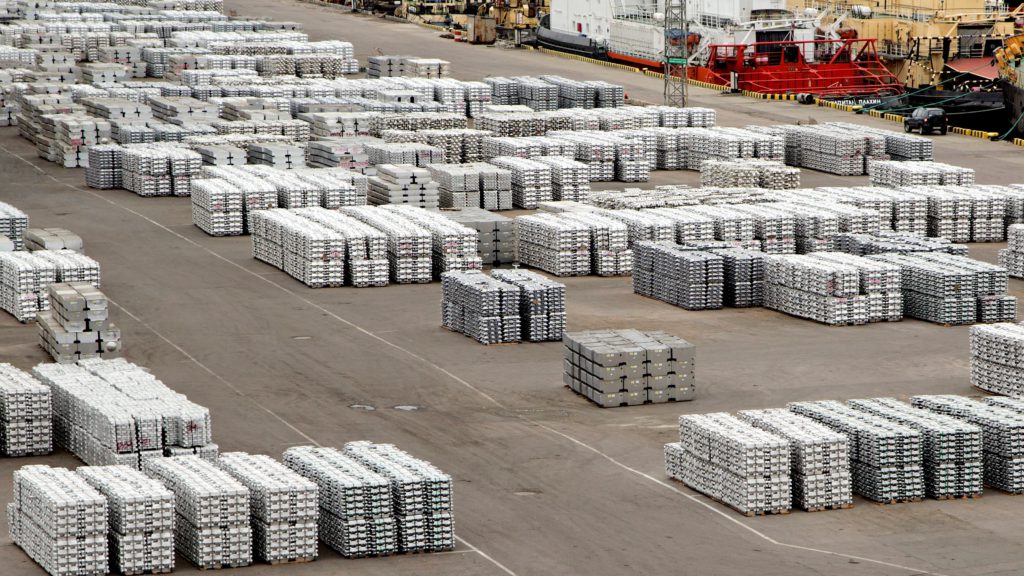Column: LME warehousers bet the great metals destock is over

It’s been a tough couple of years to be in the metals storage business with dwindling inventories taking a heavy toll on the London Metal Exchange’s (LME) global warehouse network.
Exchange storage capacity contracted by almost a quarter between March 2021 and March 2023, while the number of registered warehouse units has fallen from over 600 to a current 453.
Several smaller operators have withdrawn their LME services and the trade houses that dominated exchange warehousing over the last decade have largely sold up to specialist logistics companies.
Supply-chain disruption, first from Covid-19 and then from the spike in energy prices that followed Russia’s invasion of Ukraine, depleted stocks at the market of last resort, meaning less demand for warehousing space.
However, the stocks cycle may now be turning.
LME storage capacity grew modestly in the second quarter of this year, the first quarterly increase in two years, amid signs that stuttering global metals demand is feeding through into rising inventory.
Less stocks, less storage
LME-registered stocks of all metals slumped from 2.7 million metric tons in the first quarter of 2021 to a multi-year low of 571,000 at the start of this year.
LME shadow stocks, sitting in off-exchange warehouses, were just 246,000 metric tons at the end of June, down from over 2.0 million in the first quarter of 2021.
The great destock has resulted in a significantly slimmed-down LME warehouse network.
Total storage capacity shrank from over 4.3 million square metres in the first half of 2021 to 3.3 million at the end of March 2023.
The number of exchange-registered warehouse units has fallen by 151 over the last two years.
Halley Metals, 4STOX and Kloosterboer all withdraw from the LME warehousing business in the first half of this year. All three were localised operators servicing Spain, Antwerp and the Dutch port of Vlissingen respectively.
C. Steinweg, the largest LME operator by number of listed warehouses, has delisted a net 34 units over the last two years. Many were at Rotterdam, where the company has been selling older land-locked warehouses as it develops new deep-water capacity.
Pac Global Services has cut a net 15 units over the same period but with 74 units has overtaken Access World as the second largest player.
Access, which was sold by trade house Glencore to Infinity Logistics in 2022, has slashed its LME footprint by a net 49 units to 64 since mid-2021.
However, the pace of contraction has appreciably slowed in the 12 months. The total number of LME-registered warehouses fell by a modest 19 units after the previous year’s mass cull of 132 units.
Some operators are even expanding again.
Pivot to South Korea
LME storage capacity stopped falling in the second quarter of 2023, registering a small net increase of 31,300 square metres relative to the first quarter.
Continued shrinkage at Rotterdam and Singapore was offset by newly-listed capacity at Malaysia’s Port Klang and the South Korean ports of Busan, Incheon and Gwangyang.
LME storage space at the latter has grown by 35,000 square metres to 249,000 since the end of September last year.
Gwangyang now boasts 63 exchange-registered warehouses, the second highest tally after Rotterdam.
LME warehouse operator Istim has been expanding its presence, listing 24 units over the last year. It is now the largest LME operator in the port with 31 units.
Gwangyang has superseded Port Klang as the new hub for storing LME-registered aluminum with stocks growing from just 24,025 metric tons at the start of the year to a current 257,025.
Istim has been the main recipient of this inflow metal, although other operators are starting to get in on the act.
Turn of the stocks cycle?
Much of the aluminum warranted in Gwangyang has been Russian metal displaced from Western markets. Although not officially sanctioned, many Western users have self-sanctioned, opting to avoid Russian aluminum in favour of other producer brands.
China has increased its imports of Russian metal but there is still evidently plenty available for LME delivery. Russian-brand aluminum accounted for 81% of all LME-registered aluminum at the end of July.
More is likely to arrive in the coming weeks.
China’s metals industry is struggling with a collapsing property sector at home and weaker products demand abroad. Manufacturing activity in the United States and much of Europe is also contracting.
Industrial metals are going through a cyclical downturn which is translating into rising LME inventories.
Headline inventory rebuilt from the January lows to 780,000 metric tons at the end of July and arrivals have accelerated since then.
LME zinc stocks are now the highest they’ve been in a year, while copper stocks have grown from 60,225 to 96,625 metric tons in the space of a month.
But it is aluminum that tends to accumulate fastest during times of weak demand.
It is by some margin the largest base metal market with primary production of over 69 million metric tons and the supply chain is notoriously slow to react to changes in usage due to the cost of closing and restarting smelters.
Aluminum has been prone to periods of rapid stock build in the past and the cycle seems to be repeating itself again this year, albeit with a distinctly Russian twist.
This is not good news for metal bulls. But it’s decidedly good news for LME warehouse operators.
(The opinions expressed here are those of the author, Andy Home, a columnist for Reuters.)
(Editing by Jane Merriman)
{{ commodity.name }}
{{ post.title }}
{{ post.date }}

Comments